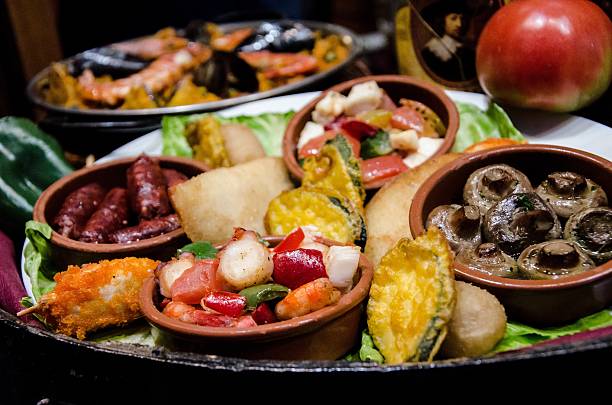Discovering the Depth of Spanish Tapas: A Culinary Journey
Nothing quite represents the sociable Spanish dining culture like tapas. These little dishes, ranging from bite-sized morsels to small plates, are a culinary tradition, a gastronomic art, and a way of life. Let's embark on a culinary journey to discover the depth and diversity of Spanish tapas.

A Brief History of Tapas
The origins of tapas remain steeped in folklore and mystery, with many theories surrounding their inception. Some tales suggest it began as a practical measure - slices of bread or ham used as a cover (‘tapa’) to prevent flies from landing in the wine. Others believe it was a royal decree from King Alfonso X, who, during his recovery from illness, ate small dishes with wine. Regardless of its beginnings, tapas has evolved into an integral part of Spanish culture.
The Art and Etiquette of Tapas
Tapas is more than just food; it’s a lively culinary event. It’s about sharing and socializing over delicious food and drinks. There’s an unwritten tapas etiquette - start with lighter dishes, like olives or calamari, before progressing to heavier ones, such as chorizo or patatas bravas. And remember, tapas is a slow-paced affair, intended to be savored and enjoyed over conversation.
The Diversity of Spanish Tapas
The beauty of tapas lies in its diversity. Each region in Spain has its unique tapas, reflective of local produce and culinary traditions. In Andalusia, you’ll find ajoblanco, a cold almond soup, while in Barcelona, it’s all about seafood tapas like gambas al ajillo (garlic prawns). The variety is endless, and each tapa tells a story of its locale.
The Evolution of Tapas
While traditional tapas continue to be enjoyed, there’s a new wave of innovative tapas sweeping through contemporary Spanish cuisine. Chefs are pushing boundaries, experimenting with ingredients and techniques to create modern tapas variations. From deconstructed tortilla Española to molecular gastronomy-inspired dishes, the face of tapas is ever-evolving, yet its spirit remains unchanged.
Tapas at Home
The beauty of tapas is that it’s adaptable and easy to recreate at home. With a few quality ingredients and straightforward preparations, you can bring a slice of Spain to your kitchen. Remember, the essence of tapas lies in sharing and enjoying food with others - it’s the perfect excuse for a fun-filled, relaxed gathering.
- Be adventurous with your tapas. Mix traditional recipes with your own creations.
- Use fresh, seasonal ingredients. The quality of ingredients makes a difference in simple tapas dishes.
- Serve a variety of tapas to cater to different tastes.
- Pair your tapas with Spanish wines or sangria for an authentic experience.
In conclusion, the world of Spanish tapas offers a rich and varied culinary journey. It opens up a way to explore Spanish culture, history, and regional diversity through its food. Whether traditional or contemporary, tapas remains a beloved Spanish tradition that brings people together. So, next time you’re dining, why not embrace the tapas style? After all, good things come in small packages.





